Introduction
Design Exercises:
I did three exercises in my design elective:
- Positive and Negative Space (paper cutout)
- Tints, Tones, and Shades (colored pencils)
- Neutrals and inorganic and organic shapes (watercolors)
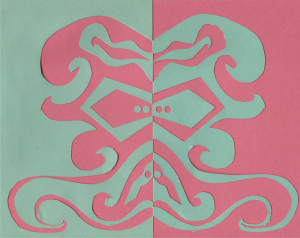
An exercise in negative and positive space
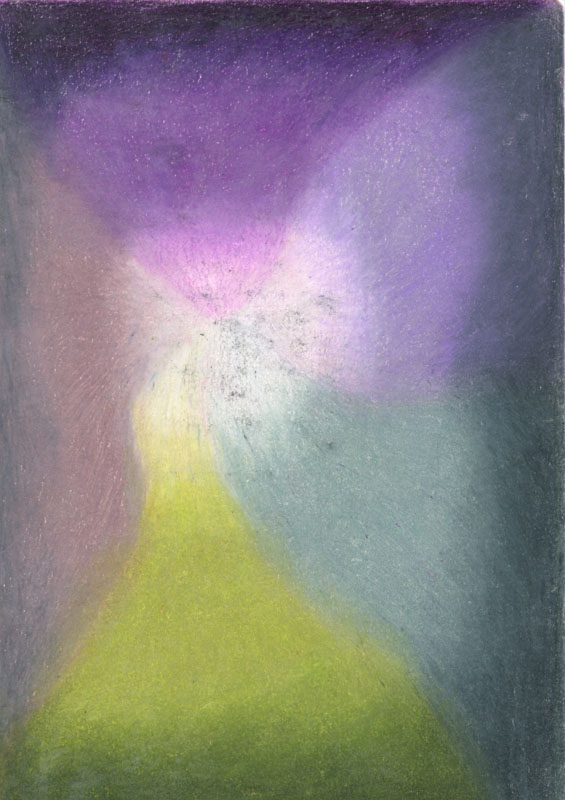
An exercise in blending colors using colored pencils
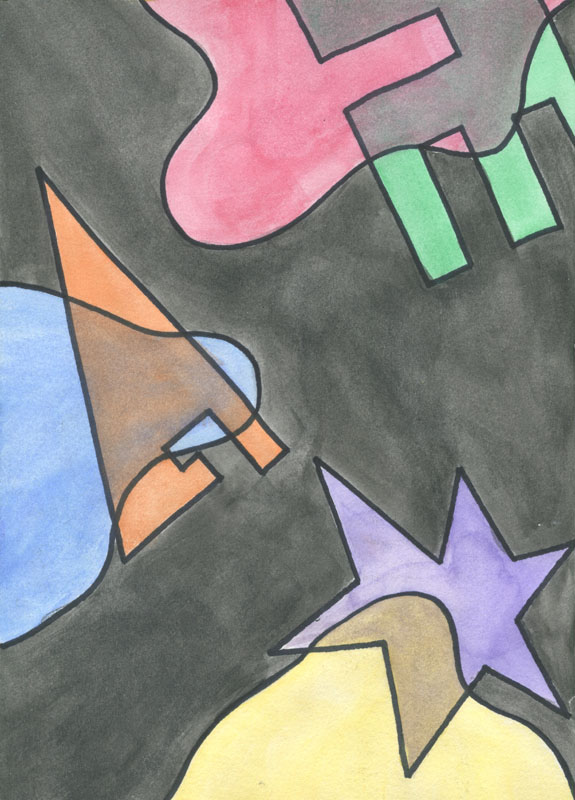
An exercise in blending colors using watercolor as well as organic and inorganic shapes
Story
A Brief Reflection:
I am 20 feet, 10 feet away from sweet, sweet, freedom when my brother catches sight of me and loudly announces my presence.
Darn it.
Pinching the bridge of my nose, I fight off the urge to strangle him and open my eyes to see my mother holding out a container to me. Again. The half-hopeful look in her eyes is pitiful, so I grit my teeth and gingerly take the box, not bothering to look at its contents. It’s probably unappealing vegetables or noodles or rice. She beams and starts chattering away in Vietnamese about ingredients that I honestly don’t care about as I stalk towards the front door, wrenching the handle so hard that the stereotypical southeast-Asian red calendar on the wall falls off of its hook and crumples pathetically on the floor.
I burst out onto the streets, frantically scanning the sidewalk for a trash can. Praying that none of my classmates will see me, I race over to one, pry the container open, and unceremoniously empty its contents out into the trash.
Upon reaching school, I slink into my first-period classroom and begin eyeing the various world maps and propaganda posters stapled crookedly to the classroom walls. I eventually catch freshly written words on the whiteboard, and after squinting at them for some time, I’m barely able to make out that our upcoming assignment is yet another group project for the Vietnam War. Great. How much more work can the teacher milk out of that God-forsaken war? The kids around me are frantically signaling to each other to try to form their groups, but their enthusiastic whispers change to exasperated groans once the teacher projects assigned groups on the screen.
I wait for my groupmates to shuffle over to where I’m sitting before announcing that I want to research the farthest thing from Vietnamese culture, possibly something like the American military’s actions. The girl draping her jacket over the chair grimaces at the idea. Of course, she’d object – she’s Vietnamese, too.
She suggests that it would be more interesting to look into how people felt about and after the war. The other two group mates are vigorously nodding their heads along. Lovely. I’ve been outvoted by a bunch of bobbleheads. I suggest the American public’s outlook on the war.
The boy sitting to the right of me that’s been tapping his pencil the whole time interjects, saying that he’d prefer to learn about what Vietnamese people thought. We volley back and forth a few times, and I’m beginning to develop a headache from the frustration. The volume of the conversation keeps rising, the girl sitting opposite me is nearly standing over me contesting my opinion, and other groups are giving us inquisitive looks. I’ve started twisting my braid in my hands, trying to focus on how each obsidian strand gleams in the light rather than blowing up at my teammates.
“Wait, aren’t you Vietnamese?” the last groupmate tentatively pipes up. My hands accidentally slip off the hairband keeping my braid in place. I try to retie my hair as quickly as possible, but it’s too late. The braid has come loose. Lowering my hands, I mutter a low yes. As expected, the group starts bombarding me with questions, the same questions I’ve heard from virtually everyone for the past however many years.
“Do you hate yourself and your own people or something?” I open my mouth to snap back a retort, but nothing comes to mind. Despite rolling my eyes nonchalantly, I’m given away by my inflamed cheeks. My mind fumbles with the question, disconnecting and connecting it over and over again, like a puzzle. Why do I hate being Vietnamese so much? I excuse myself and fly down the hall to the bathroom. Jerking the tap open and splashing water over my face, I shakily look up at the mirror, my brown eyes blinking worriedly back at me. They trail around my likeness in the mirror, taking in my golden-honey-colored skin, my hair the color of the midnight sky flowing gracefully down my shoulders, and finally back to the warm embers glowing in my eyes. All of these features passed down to me by my ancestors, and yet I can’t bring myself to love them because of what others have said. I rummage around for a memory of the last time that I spoke to my mother in Vietnamese, the last time that I willingly brought my traditional food to school, the last time that I could proudly proclaim “yes, I am Vietnamese.” I can’t recall.
My eyes burn and I bite my lip to assuage the sudden tight feeling in my chest. The pain I put myself through in order to be “normal” doesn’t seem worth it anymore. What even is “normal?” I relinquish the death grip I had placed on the edges of the sink and gulp in cool air, push my shoulders back, and lift my head high.
Weariness suddenly overcomes me, and my shoulders slump. I can’t go on pretending to be something that I’m not. It’s tiring. I still see a weird Vietnamese girl staring back at me in the mirror that I don’t entirely like, but maybe I should start trying to accept myself.
With those thoughts in mind, I push open the door and start the trek back to the classroom. While I redo my braid, I let thoughts of how I might start to re-engage with my Vietnamese side percolate. This project might actually be a good starting point. As I sit back down at the table, I offer a wobbly smile and ask to look into the diaspora of the Vietnamese. The girl with the jacket reaches over and squeezes my hand sympathetically.
“Hey, I get it. I’ll help you through it.” I guess I’m not so alone in this pursuit.
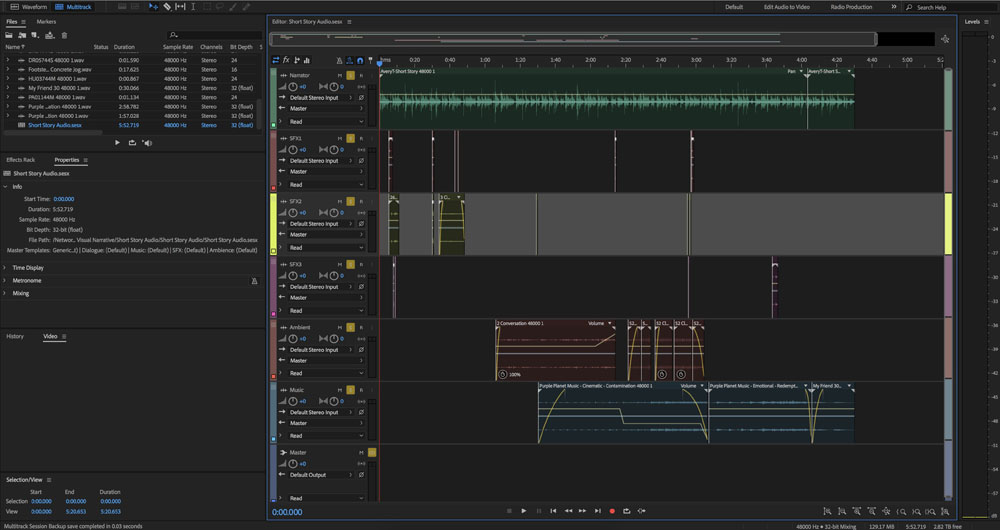
A screenshot of the different tracks of my audio file in Adobe Audition
Illustrations
Section Header Illustrations:
To create section headers for my website, I used Adobe Illustrator and Adobe Dreamweaver. The four drawings I used for my banners are related to my narrative and have to do with the protagonist’s view of her identity at various points throughout the story. To implement the banners on my website and make it so that there was fixed scrolling, I made a CSS Styles Sheet using Adobe Dreamweaver.
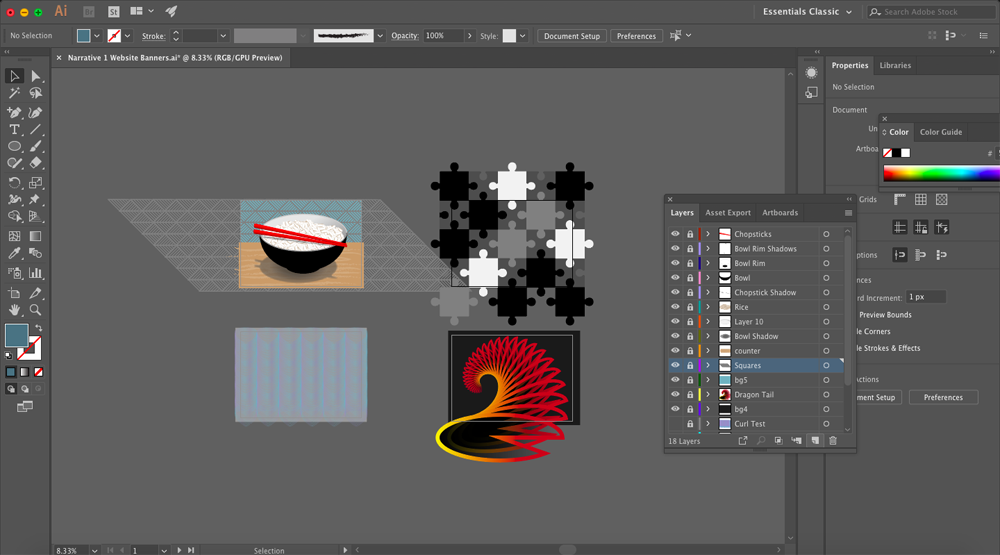
A screenshot of my website headers in Adobe Illustrator
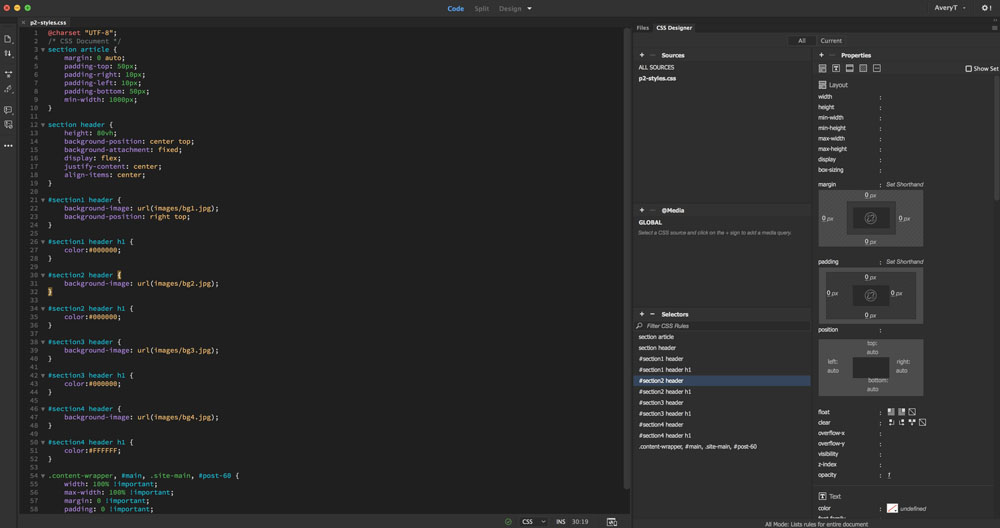
My CSS Styles Sheet for my Website in Adobe Dreamweaver
Personal Illustration:
My inspiration for my personal illustration was the blend mode tool in Adobe Illustrator. Upon discovering the tool, my mind immediately jumped to staves (the 5 lines that western music is notated on) and how I might represent the influence of music on me. The illustration depicts the vibrancy and strength that flows from a person because of music.
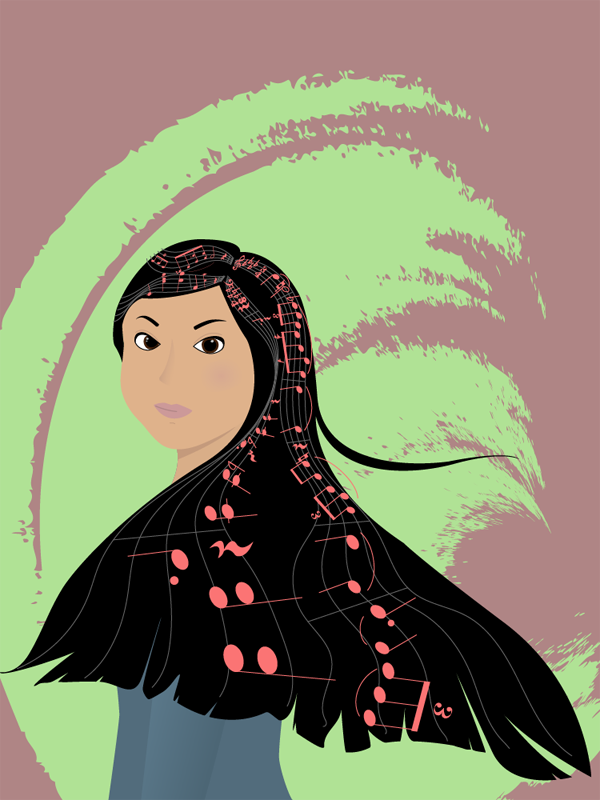
Personal Illustration: Spiritoso
Digitally Designed Scene
In Adobe Illustrator, I used the pen tool to outline both the background and the creature. Each color in my illustration is a tint, tone, or shade of 5 hues selected from a Pantone color wheel. To blend colors, I used combinations of gradients, the feathering effect, and adjusted opacity levels. For details on the creature’s main body and on its tail, I used the brush tool. As a final touch, I added shadows by manipulating shapes with the mesh tool and changing the opacity and shades.I would like to thank Ms. Parkinson as well as my Design classmates for providing me with feedback concerning the colors used in my illustration. Color psychology is something that I definitely am more aware of and will keep in mind to better convey my feelings in future projects.
 Illustration of Scene from “A Brief Reflection”
Illustration of Scene from “A Brief Reflection”
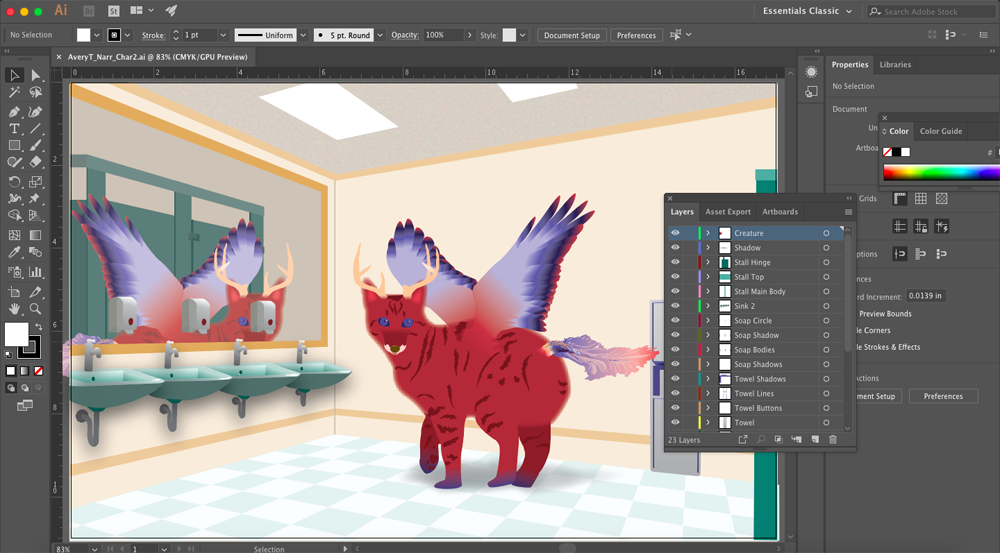
A screenshot of my workspace in Adobe Illustrator
